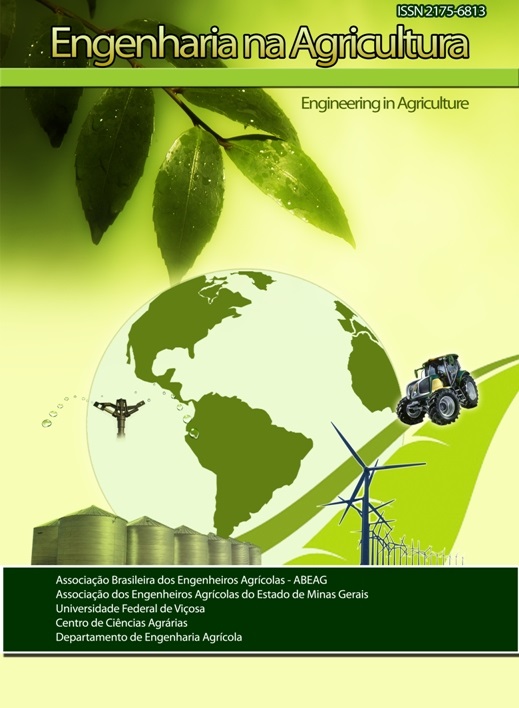MANAGEMENT ZONES IN THE EVALUATION OF PHOSPHORUS AND POTASSIUM LEVELS IN THE SOIL AND ITS CORRELATION WITH THE IRRIGATED RICE YIELD
DOI:
https://doi.org/10.13083/reveng.v25i2.749Keywords:
agricultura de precisão, fertilidade, georreferenciamento, variabilidadeAbstract
The phosphorus participates in vital processes in plants, such as photosynthesis, respiration, energy storage and transfer, cell division and cell growth. The potassium acts in the activation of some enzymes and plays an important role in the balance of water in plants. This study aimed to correlate the levels of phosphorus and potassium with productivity in irrigated rice as well as assess the feasibility of precision farming use in irrigated rice area. This experiment was conducted for three seasons in succession crops: rice, soybean and, rice, in Santa Vitória of Palmar / RS / Brazil. We used an area of 22.18 ha, divided into 15 portions, which were the center point georeferenced. A soil sample were collected from each plot consists of 9 sub-samples, which were sent to the Soil Analysis Laboratory of UFPel. Income and fertility maps were generated using data of soil analysis and productivity and created management zones with different fertilizer to correct and standardize the phosphorus and potassium. These results show that: precision agriculture provided increase of soil fertility through the management areas of use; the use of management zones decreased variability in phosphorus and potassium in the plots studied the block; there was no correlation between the levels of phosphorus and potassium in the yield of irrigated rice.Downloads
Downloads
Published
How to Cite
Issue
Section
License
Authors who publish with this journal agree to the following terms:
The author(s) authorize(s) the publication of the text in the journal;
The author(s) ensure(s) that the contribution is original and unpublished and that it is not in the process of evaluation by another journal;
The journal is not responsible for the views, ideas and concepts presented in articles, and these are the sole responsibility of the author(s);
The publishers reserve the right to make textual adjustments and adapt texts to meet with publication standards.
From submission, the author is fully conceding the paper's patrimonial rights to the publication, but retaining the owner of its moral rights (authorship and paper's identification) according to Creative Commons Attribution-Noncommercial.








 Licensed by
Licensed by 